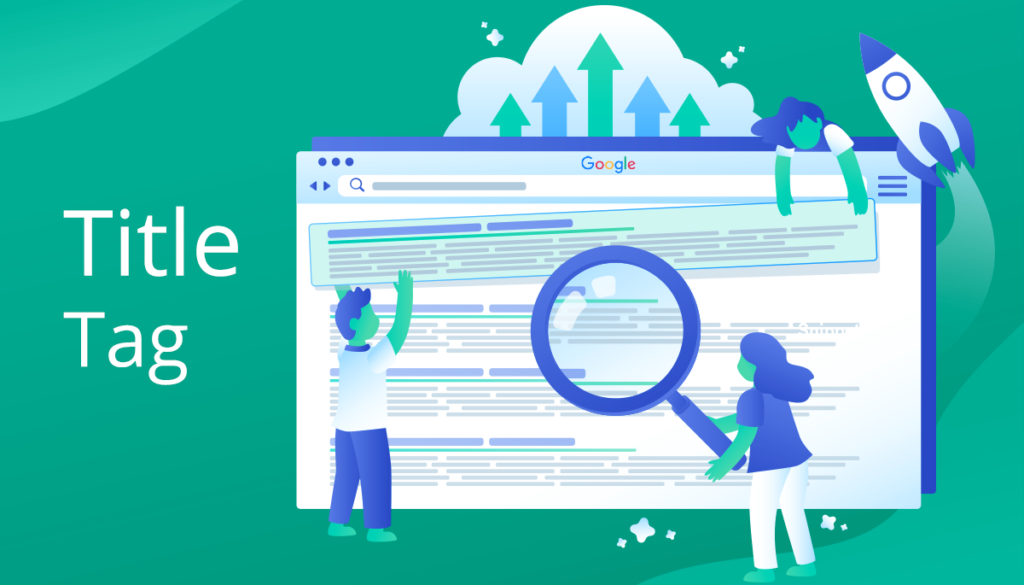In the ever-evolving world of search engine optimization (SEO), title tags play a crucial role in determining the visibility and relevance of web pages in search engine results. As one of the most fundamental elements of SEO, title tags not only impact how search engines interpret the content of your pages but also influence click-through rates (CTR) from search results. This comprehensive blog post will delve into the importance of title tags, their usefulness, the tools you can use to optimize them, and best practices for crafting effective title tags that enhance your SEO efforts.
What is a Title Tag?
The title tag, also known as the title element, is an HTML element that specifies the title of a web page. It appears in the head section of the HTML code and is used by search engines to understand the content of a page. Additionally, it is displayed in search engine results pages (SERPs) as the clickable headline for a given result.
Here’s a basic example of a title tag in HTML:
htmlCopy code<head>
<title>How to Optimize Your Title Tags for SEO</title>
</head>
This tag is crucial because it gives both search engines and users a snapshot of what to expect from the page. Crafting an effective title tag is an art as much as it is a science, requiring a balance of relevance, keyword optimization, and user appeal.

Importance of Title Tags
1. SEO Impact
Title tags are fundamental for SEO because they help search engines understand the content and context of your web page. A well-optimized title tag can significantly improve your search engine rankings. Here’s why:
- Keywords: Including relevant keywords in your title tag helps search engines identify the page’s topic. However, keyword stuffing should be avoided; titles should be natural and relevant.
- Relevance: Search engines use title tags to match queries with relevant pages. A descriptive and precise title improves the likelihood of ranking for specific search terms.
- CTR (Click-Through Rate): An engaging title tag encourages users to click through from search results, directly impacting your CTR and overall SEO performance.
2. User Experience
Title tags also play a crucial role in user experience:
- First Impressions: The title tag is often the first thing users see in search results. A compelling and relevant title can entice users to click through to your site.
- Branding: Including your brand name in the title tag can help build brand recognition and trust.
- Clarity: A clear and descriptive title tag helps users quickly understand what the page is about, improving their overall experience.
3. Social Sharing
When users share your content on social media platforms, the title tag often appears as the main headline. A well-crafted title tag can increase engagement and drive traffic from social media channels.

Crafting Effective Title Tags
Creating an effective title tag requires a thoughtful approach. Here are some best practices to follow:
1. Incorporate Target Keywords
Including your primary target keywords in the title tag helps search engines understand what your page is about. Place important keywords toward the beginning of the title, as search engines may give more weight to the first few words.
2. Keep It Concise
Search engines typically display only the first 50-60 characters of a title tag. Aim to keep your titles within this range to ensure they are fully visible in search results. Concise titles also tend to be more impactful and easier for users to read.
3. Include Your Brand Name
For brand recognition and trust, consider including your brand name in the title tag. Typically, you would place it at the end of the title, separated by a delimiter such as a pipe (|) or a dash (-).
4. Be Descriptive and Relevant
Ensure that your title tag accurately describes the content of the page. Avoid vague or misleading titles, as these can lead to high bounce rates and negatively impact your SEO.
5. Create Unique Titles for Each Page
Each page on your website should have a unique title tag to avoid confusion and improve search engine indexing. Unique titles also help users differentiate between pages when browsing search results.
6. Consider User Intent
Think about what users are searching for and what would prompt them to click on your link. Craft titles that address their needs and provide value.
7. Use Action Words
Action-oriented language can make your title tags more compelling. Phrases like “Learn,” “Discover,” “Find Out,” or “Get Tips” can increase click-through rates by encouraging users to take action.
Tools for Optimizing Title Tags
Several tools can help you create and optimize your title tags effectively. Here are some of the most popular ones:
1. Google Search Console
Google Search Console provides valuable insights into how your pages are performing in search results. You can see which queries are bringing traffic to your site and analyze the performance of your title tags. This data helps you identify opportunities for optimization.
2. SEMrush
SEMrush offers a comprehensive suite of SEO tools, including a title tag analysis feature. It helps you audit your title tags, check for duplicates, and compare your titles with competitors.
3. Ahrefs
Ahrefs is another powerful SEO tool that provides insights into your title tags and their performance. It helps you identify high-performing keywords and optimize your titles accordingly.
4. Yoast SEO
Yoast SEO is a popular plugin for WordPress users. It provides real-time feedback on your title tags, ensuring they are optimized for both search engines and readability.
5. Moz
Moz offers a range of SEO tools, including a title tag optimizer. It helps you craft SEO-friendly titles and analyze their effectiveness.
6. Screaming Frog
Screaming Frog is a website crawler that can analyze your site’s title tags. It helps identify issues such as missing or duplicate titles and provides insights for optimization.
7. Google Trends
Google Trends allows you to see the popularity of search queries over time. This can help you identify trending keywords and incorporate them into your title tags.
Common Mistakes to Avoid
While optimizing title tags, be mindful of common mistakes that can undermine your efforts:
1. Keyword Stuffing
Overloading your title tag with keywords can make it look spammy and reduce its effectiveness. Focus on a few relevant keywords and ensure the title reads naturally.
2. Duplicate Titles
Having duplicate title tags across multiple pages can confuse search engines and users. Ensure each page has a unique and descriptive title.
3. Ignoring Mobile Users
With the rise of mobile search, it’s essential to consider how your title tags will appear on mobile devices. Ensure they are concise and display properly on smaller screens.
4. Neglecting CTR
Even if a title tag is optimized for SEO, it must be engaging enough to encourage clicks. Focus on crafting titles that capture attention and drive traffic.
5. Overlooking Local SEO
For businesses targeting local audiences, including location-based keywords in your title tags can improve local search visibility. Ensure your titles reflect the geographic focus of your content.

Conclusion
Title tags are a fundamental component of SEO that can significantly impact your website’s search engine rankings and user experience. By understanding their importance, crafting effective titles, and using the right tools for optimization, you can enhance your site’s visibility and attract more traffic. Remember to stay updated with SEO best practices and continuously refine your title tags to keep up with changes in search algorithms and user behavior. With careful attention and strategic optimization, your title tags can be a powerful asset in achieving SEO success. GMI


